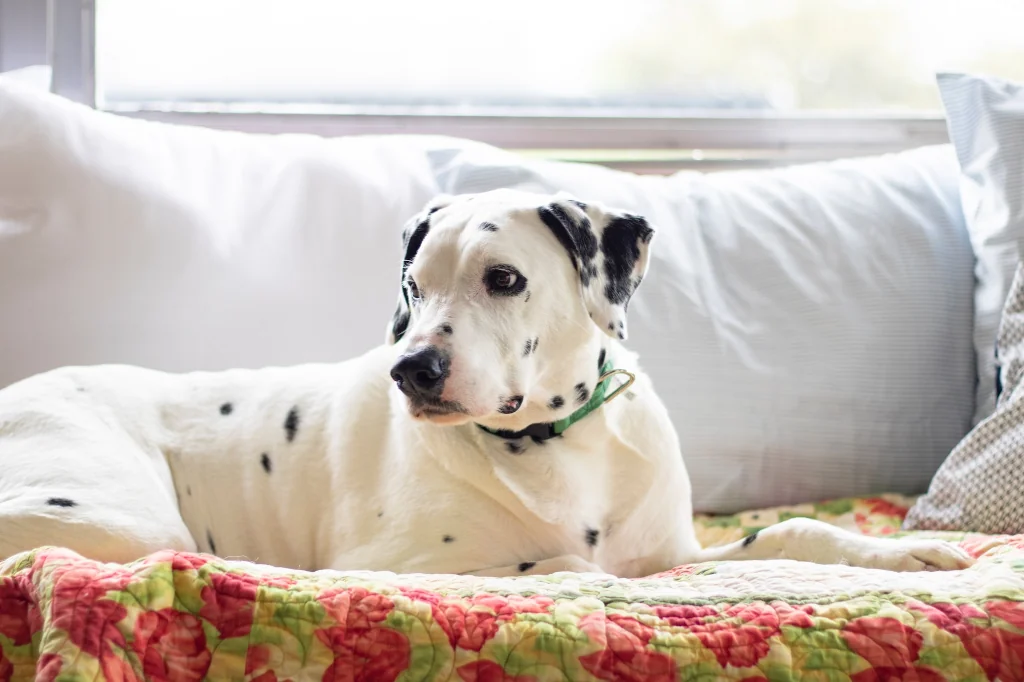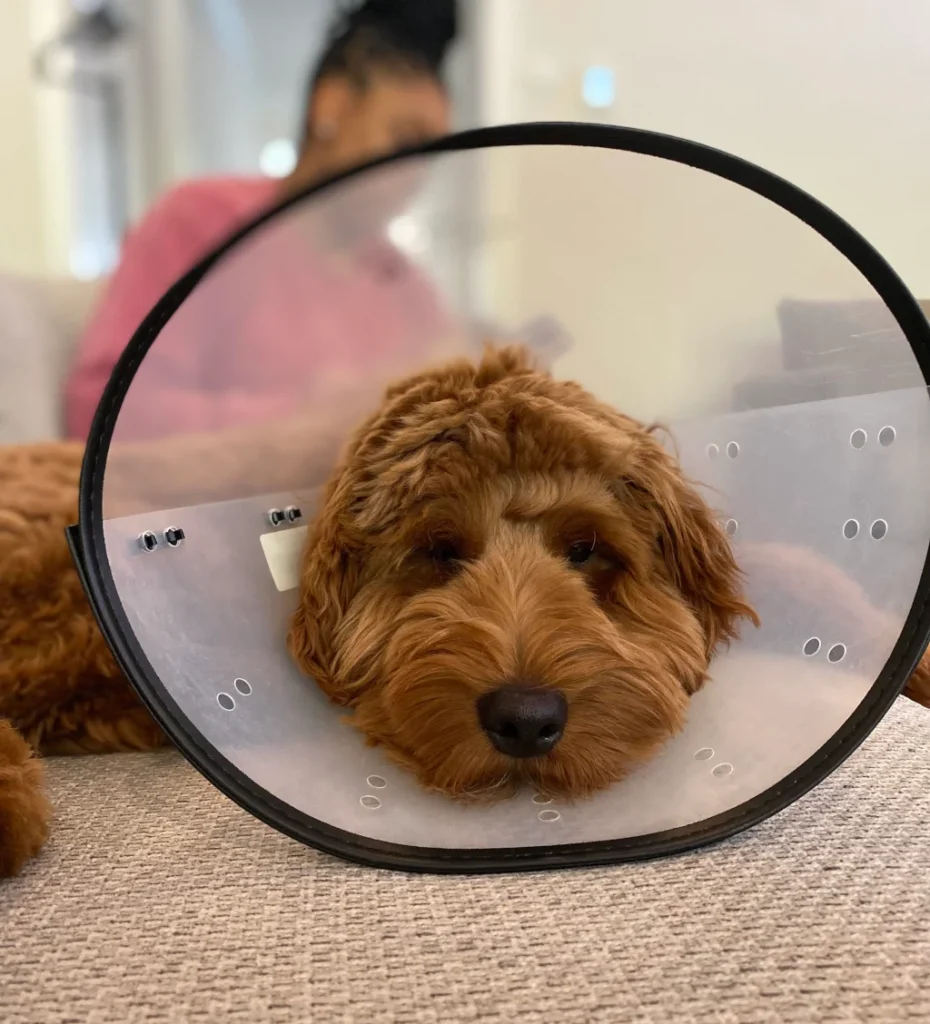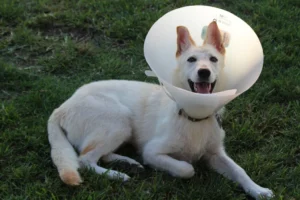Disclosure: We may earn a commission from helpful, relevant links in our content. No cost to you. See our privacy policy.
Deciding to neuter your dog is a significant step in your furry friend’s life. It’s filled with both, anticipation of a healthier future and natural concerns over surgery.
You might be wrestling with questions about the operation itself, or perhaps the recovery process is keeping you up at night. As your reliable guide, we’re here to walk you through what to expect and how to navigate this journey with confidence.
Let’s set our worries aside and dive straight into the wealth of knowledge about neutering your dog, what the process is like, as well as provide you with some tips for recovery.

How Long Does a Spay or Neuter Surgery Usually Take?
One of the initial questions dog parents often have is about the duration of the neutering surgery.
On average, neutering a male dog takes between 5 to 20 minutes, while spaying a female dog can take between 20 to 90 minutes. However, these are rough estimates and the actual duration varies based on factors such as your dog’s size, age, and overall health condition.
Always remember, it’s not about how quickly the procedure can be done, but how safely and effectively.
What Happens During the Surgery?
As a responsible pet parent, it’s natural to be curious about what your dog undergoes during the neutering process.
It begins with a pre-surgical exam to ensure your dog is fit for the procedure. Next, your dog is sedated with general anesthesia to ensure they don’t experience any pain or discomfort.
The veterinarian then performs the surgical procedure, removing the reproductive organs through a small incision. Throughout the surgery, your dog’s vital signs are closely monitored to ensure their safety.
After the procedure, your dog is closely observed until they fully recover from anesthesia. We advise trusting in the expertise of your chosen vet clinic—they’re there to provide the best care for your furry companion.
Is Spaying or Neutering Painful for Dogs?
I know what you’re thinking—putting your dog through surgery is worrisome. You hate seeing your furry friend in distress. But let me assure you, veterinarians go to great lengths to minimize any discomfort your dog might experience during a neuter or spay surgery.
Your dog will be under general anesthesia throughout the procedure, which means they won’t feel any pain. Post-surgery, pain management is a critical part of recovery, and your vet will prescribe appropriate pain relief medications.
While your dog may experience some discomfort as they heal, rest assured, your veterinary team has their comfort as a top priority.
Suggested read: Benefits and Risks of Fixing Your Dog

How Can You Support Your Dog’s Recovery Post-Surgery?
Once your dog is back home post-surgery, your role as a nurturing parent kicks in. Here are some tips to help your dog have a comfortable and speedy recovery:
- First, limit their physical activity for a few days. Even if they seem energetic, don’t let them jump or run around too much to prevent any complications or injuries to the surgery site. A leash walk in the yard or house is enough for them to stretch their legs without overdoing it.
- Second, ensure they are eating a nutritious diet to support healing. Consider incorporating a quality, vet-recommended recovery diet which is specifically designed to meet the nutritional needs of a recovering canine.
- Third, pay close attention to the surgery site for any signs of infection such as redness, swelling, or unusual discharge. Make sure the site is clean by avoiding baths or swimming until your vet gives the green light.
- Also, monitor their general behavior, eating habits, and bathroom routines to ensure everything is normal. A change in any of these areas could be a red flag, so don’t hesitate to reach out to your vet if something doesn’t seem right.
- Try to create a calm and quiet environment at home. Too much noise or other pets can cause stress or excitement, which can slow down the healing process. This could mean giving your dog a separate space away from high foot traffic areas or even using a white noise machine to help muffle abrupt sounds.
Remember, your presence, patience, and care can work wonders during this healing phase. Your dog might not express in words, but they sure understand and appreciate your love and care. Hang in there, and soon enough, your dog will be back to their cheerful, playful self!
Suggested read: Best Age to Neuter a Dog
How Long Until Your Dog Fully Recover After Surgery?
Healing from spay or neuter surgery is a gradual process. Typically, the first few days post-surgery, you may notice your furry friend being less active, and that’s entirely normal.
Generally, stitches—if any were used—get removed around 7 to 10 days after the procedure. However, complete recovery, where your dog can safely return to regular physical activities such as running, jumping, and playing, may take around two weeks.
During this recovery period, it’s important to keep mental stimulation high – a variety of chew toys or puzzle feeders can keep your dog entertained while they’re on bed rest.
Post-surgery, your dog will need a comfortable space to rest and heal. This Furhaven Orthopedic Dog bed is not only plush and comfortable but also designed with orthopedic foam to provide excellent support. Its ergonomic contour is perfect for dogs to snuggle in during their recovery.
Remember, every dog is unique, and recovery times can vary. Be patient, keep a close watch on your dog, and maintain regular communication with your vet.
These few weeks might feel slow, but knowing you’re doing the best for your dog’s health can make all the difference.
FAQs
Should I be present during my dog’s surgery?
In most cases, pet owners aren’t present during the procedure. This is to maintain a sterile environment and let the veterinary professionals focus entirely on the surgery. You can certainly be there before and after to support your furry friend.
How long does a spay operation take?
A standard spay or neuter surgery typically takes anywhere from 20 minutes to an hour, depending on your dog’s size, age, and overall health. Your vet can provide a more accurate estimate.
Can I still go for walks with my dog during the recovery period?
Short, gentle leash walks are recommended during the recovery period as it allows your dog to stretch their legs without risking injury to the surgery site. However, it’s best to avoid strenuous activities like running or playing fetch until your vet approves.
Alex, a passionate animal lover, has experience in training and understanding animal behavior. As a proud pet parent to two dogs and three cats, he founded AnimalReport.net to share insights from animal experts and expand his knowledge of the animal kingdom.




